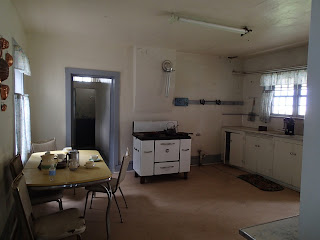September 10, 2013
Antelope Island State
Park, UT
Monte woke up to the
sound of a coyote howling.
He opened up
the shade and was able to grab his camera in time to get a few shots.
Just as the coyote
disappeared in the brush, this jack rabbit appeared.
We had a very leisurely
morning. In the early afternoon we
packed our bathing suits, towels and toiletries because we planned on swimming
later on and then taking advantage of the hot showers.
But first we headed to
the Visitor Center.
We paid for a second
night of camping and then watched a short film about the history of Antelope
Island.
We found a lovely spot to
eat lunch and then headed over to the parking area with a beach access.
It was a loooooong walk
down to the water.
When we finally made
it to the water we had to walk out a looooong way because it was so
shallow.
I gave up but Monte continued
on.
He skipped stones for a
while
and when he was ready to get out of the water discovered that the
thousands of flies on the sand moved in concert as he walked.
When he noticed some sea
foam
he couldn’t resist making foam angels.
We took advantage of the
very hot showers (a bargain at 4 minutes for a dollar.)
Our next stop was at
Buffalo Point high above our campground.
A silent movie entitled,
The Covered Wagon, was filmed on the Island in 1923.
At almost every turn we
encountered bison.
We found this one guy rolling
around in the dirt very entertaining.
In 1848 a ranch was
established on the Island.
Fielding Garr
had been assigned by the Mormon Church to establish a ranch as a stronghold for
managing the church tithing herds.
The ranch, that at one
time had over 10,000 sheep, changed hands several times until it became a state
park in 1981.
Shearing Barn-In the 1850’s
sheep were all shorn once each year by hand.
In the 1920’s, with the mechanization of the shearing process, a sheep
could be shorn in just a few minutes as compared to almost half an hour.
Jayhawk Stacker-Before
hay at the ranch was baled, a machine called the Jayhawk Stacker accomplished
the task of lifting hay from the ground to build a stack.
Mechanic’s Pit-Before electricity
came to the Island in the 1950s, trucks and other farm equipment could not be
power lifted on a hoist for repair. This
pit enabled a mechanic to change oil or perform other needed maintenance.
Monte trying to lasso
this stubborn little “doggie.”
The ranch house-as it
appeared in the 1970’s.
Sheep Camp-This wagon
played an important part in sheep ranching in the west. A sheep camp like this one would have been
used in the spring at the lambing sheds.
The wagon contained the herder’s bed and personal items.
Monte spotted this owl in
the tree.
At first it refused to look
his way but after hooting at it for a while he turned his head.
We were rewarded with
another spectacular sunset-the perfect ending to a wonderful day.



























































We normally pass through Salt Lake but from your pics I think this looks like a worthwhile stop.
ReplyDeleteIf it's in your direction of travel check out Goose Neck State Park. Free dry camping overlooking the San Juan River 1000' below. From there you can do a day trip to Moki Dugway for fabulous valley views plus Valley of the Gods is a must do. It's on a good dirt road that loops back to the highway. Your also not far from Monument Valley Arizona.
Glad to see your on the move again after all that sitting around! :-)
Safe travels!